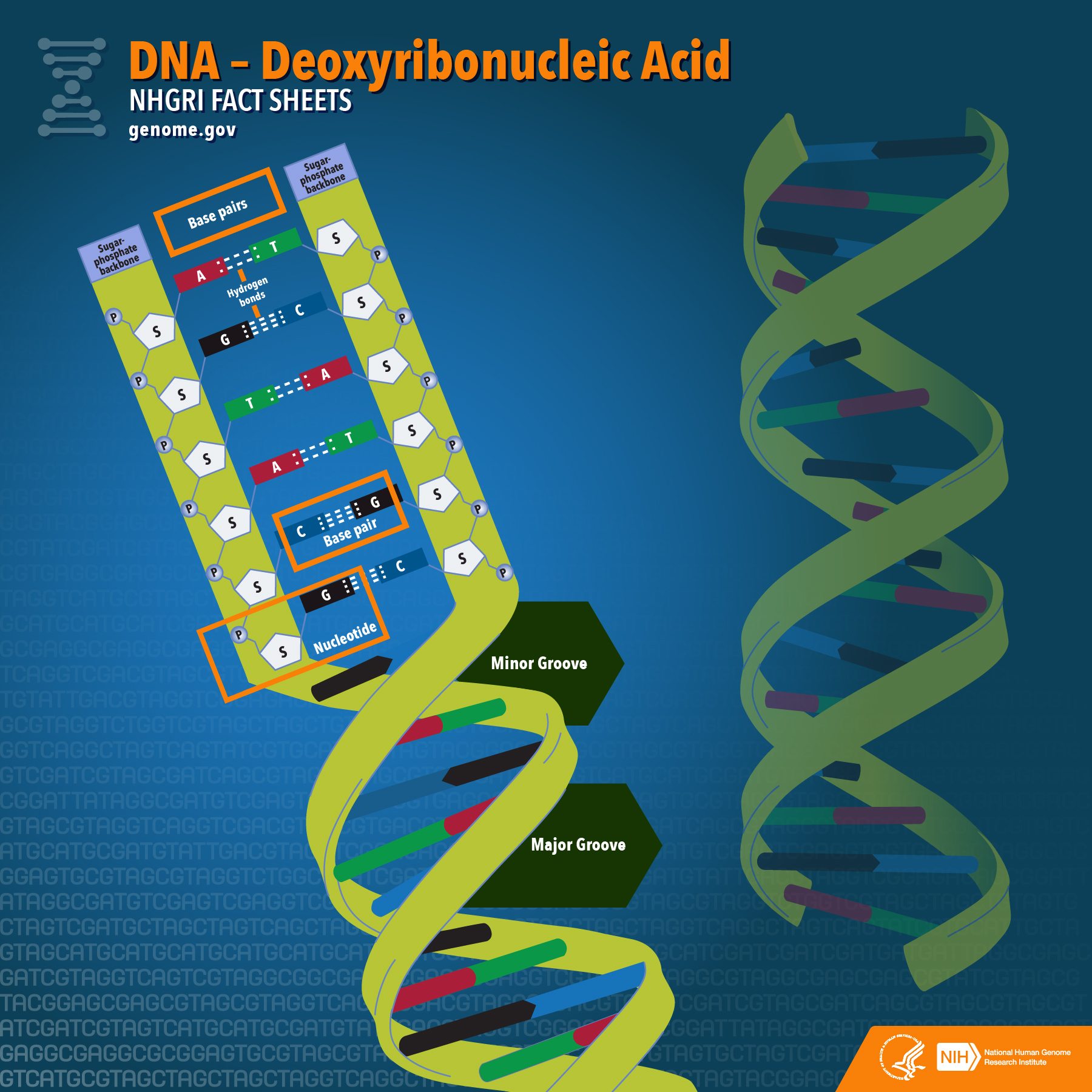D.N.A Genetic information- it helps in exchange of genetic information from parents to offspring.
Deoxyribonucleic acid (DNA) is a nucleic acid that contains the genetic instructions for the development and function of living things.
All known cellular life and some viruses contain DNA.
The main role of DNA in the cell is the long-term storage of information.
It is often compared to a blueprint, since it contains the instructions to construct other components of the cell, such as proteins and RNA molecules.
The DNA segments that carry genetic information are called genes, but other DNA sequences have structural purposes, or are involved in regulating the expression of genetic information.
In eukaryotes such as animals and plants, DNA is stored inside the cell nucleus, while in prokaryotes such as bacteria and archaea, the DNA is in the cell's cytoplasm.
Unlike enzymes, DNA does not act directly on other molecules; rather, various enzymes act on DNA and copy its information into either more DNA, in DNA replication, or transcribe it into protein.
Other proteins such as histones are involved in the packaging of DNA or repairing the damage to DNA that causes mutations.
DNA is a long polymer of simple units called nucleotides, which are held together by a backbone made of sugars and phosphate groups.
This backbone carries four types of molecules called bases and it is the sequence of these four bases that encodes information.
The major function of DNA is to encode the sequence of amino acid residues in proteins, using the genetic code.
To read the genetic code, cells make a copy of a stretch of DNA in the nucleic acid RNA.
These RNA copies can then used to direct protein synthesis, but they can also be used directly as parts of ribosomes or spliceosomes.
Note: The above text is excerpted from the Wikipedia article "DNA", which has been released under the GNU Free Documentation License.
Related Stories



No comments:
Post a Comment